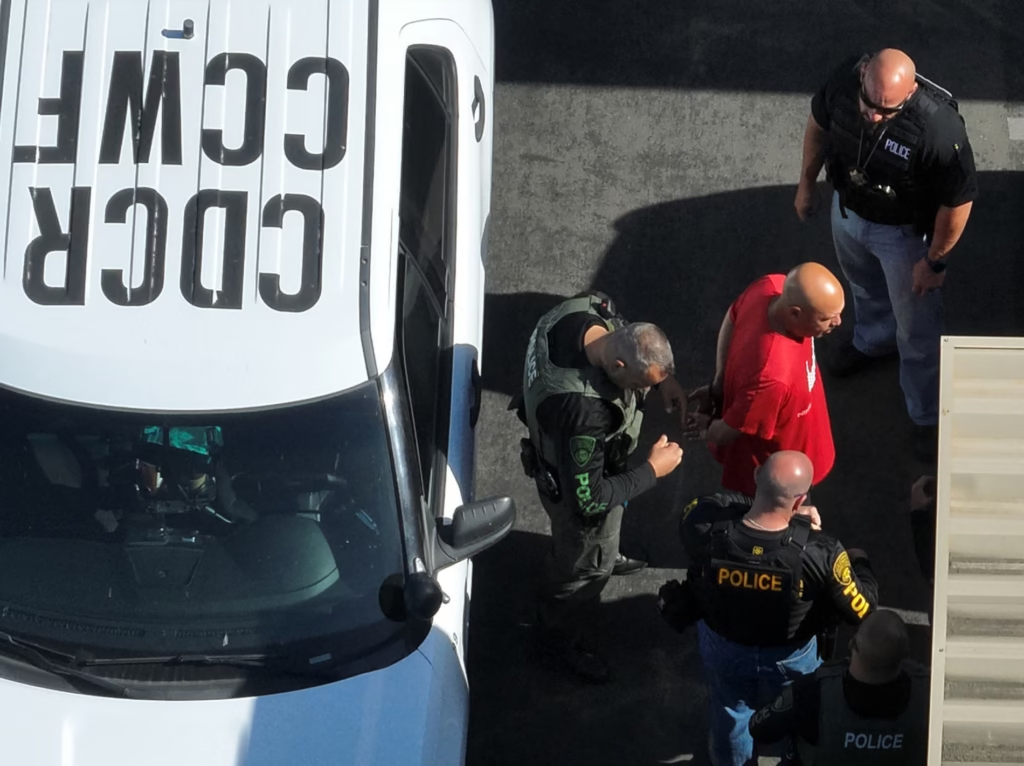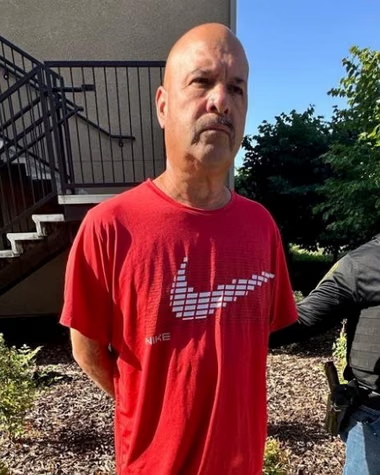Gregory Rodriguez convicted of more than 60 charges of abusing women in his custody over nearly a decade
Sam Levin in Los Angeles
Thu 14 Aug 2025

A former California correctional officer convicted of dozens of sexual abuse charges at a women’s prison was sentenced to 224 years in prison on Thursday.
Gregory Rodriguez, 57, worked as a guard at the Central California women’s facility (CCWF), the state’s largest women’s prison, and was found guilty in January of more than 60 charges of abusing nine women in his custody, including rape and battery.
Rodriguez’s case became a huge scandal for the state, exposing a longstanding crisis of sexual misconduct and abuse behind bars. The officer was found to have targeted incarcerated women over the span of nearly a decade before he retired in 2022 while under investigation.
A Guardian investigation published in 2023 revealed the prison received a report of Rodriguez’s abuse in 2014, but did not terminate him and instead punished the victim. That survivor spoke of being sent to solitary confinement while authorities investigated claims of her abuse.
It is rare for prison officers to be criminally charged and convicted for on-duty sexual misconduct, despite data suggesting abuse by guards is a systemic problem in California and across the US. Misconduct records disclosed by the California department of corrections and rehabilitation (CDCR) showed that from 2014 to 2023, hundreds of incarcerated women filed complaints of staff sexual abuse, but only four officers were terminated for sexual misconduct in that timeframe.
Rodriguez, who worked for the CDCR for 27 years, isolated victims in areas without cameras and coerced them into sex by offering items such as gum or tobacco and threatening to “make prison very difficult” if they did not comply, according to prison investigators’ and victims’ lawsuits. The majority of rapes charged by prosecutors occurred in 2021 and 2022 in the board of parole hearings area, where incarcerated residents have confidential attorney meetings and appear before commissioners to plead for their freedom.
One woman struggling with substance use disorder said Rodriguez coerced her into sex by offering to get her addiction medication, but instead of getting her a prescription, he gave her heroin, which led her to overdose.
In announcing the sentence, Judge Katherine Rigby recounted how Rodriguez lured his victims and tried to hide his assaults, saying the survivors would suffer “lifelong impacts”. She said: “These victims were put in unfathomable and untenable positions, and they could not leave as they were incarcerated.”
Rodriguez had pleaded not guilty and his attorney sought to cast doubt on victims’ accounts at trial. He was convicted on a majority of the more than 90 charges prosecutors brought on behalf of 13 women, though for some counts the jury was hung or found him not guilty. His lawyers had asked for a 56-year sentence, and Rodriguez told the judge his daughter was sick and needed support. His family also testified on his behalf.

After his conviction, his attorney, Roger Wilson, said: “The jury clearly believed some inmates and disbelieved others.” Wilson did not immediately respond to an inquiry.
Some survivors testified in court last month in front of Rodriguez, including Nikki, who spoke out to the Guardian in 2023 from behind bars and has since been released. She has been referred to by her first name in court proceedings.
“For over a decade, I have lived in the aftermath of what you did to me,” she said in court, according to a copy of her statement she shared with the Guardian. “I was an incarcerated woman – vulnerable, alone, stripped of dignity, humanity and power … You used that moment to feed on me. You hunted me … What you did was predatory, manipulative and evil. You violated me under the cloak of authority … You raped me when I had no freedom to run, no rights to call upon, no one I could tell without fear of retaliation. You didn’t just hurt me, you shattered something sacred inside me. I’m still trying to crawl out of the hole you put me in.”
She said he had “groomed” her, saying he “exploited my isolation, my loneliness, my hunger for basic humanity … You built a prison inside the prison, and I still live in that.”
She added: “I will no longer whisper the truth that you, your lawyer and CDCR tried to bury. This statement is for me so I can start to reclaim what you tried to take from me.”
In an interview this week before sentencing, Nikki said she would not stay quiet: “I’m doing this for the women who are still inside … who are too terrified to speak out, because that was once me, too.”
She said the CDCR was “run by bullies protecting themselves” and that while incarcerated, she faced harassment and intimidation after Rodriguez’s abuse came to light: “It was their way of silencing and normalizing the trauma they perpetuate … This was never about one bad apple. CDCR enabled Rodriguez, who got away with rape for years, and more abusers hide in plain sight. How many more women must be broken before we call this what it is: an injustice?”
On Thursday, before the sentence was announced, one incarcerated victim cried as she testified by Zoom from prison, condemning Rodriguez for failing to take responsibility or express remorse. Addressing his family, she said: “He didn’t think about his daughter when he raped me. He didn’t care about me being someone’s daughter … I will encourage women to speak up because there are too many men like you who are still out there.”
Another survivor’s statement, read by a victim’s advocate, said that after Rodriguez raped her, she asked the CDCR for STD and pregnancy tests, but officials told her she would have to admit engaging in “risky behavior” and could face discipline and a lengthened sentence. She criticized the department for not terminating supervisors and other officers who “allowed this to continue for so long” despite knowing about Rodriguez’s abuse. She said: “The system has failed.”
The CDCR previously said it had identified more than 22 potential victims of Rodriguez. A department spokesperson said on Thursday the sentence “reaffirms CDCR’s own internal investigation and referral” to prosecutors: “The department resolutely condemns any staff member – especially a peace officer who is entrusted to enforce the law – who violates their oath and shatters public trust.”
The spokesperson referred to a 2022 statement that said the CDCR enforces a “zero-tolerance policy for sexual violence”, that retaliation against people who report abuse “is not tolerated”, and that it was expanding its system of surveillance cameras to assist in “preventing or detecting misconduct by both staff and inmate alike”.
Last year, the US Department of Justice under the Biden administration opened a civil rights investigation into staff sexual abuse at CCWF and California’s other women’s prison, citing the Rodriguez case and hundreds of lawsuits. The justice department noted that officers accused of misconduct included “the very people responsible for handling complaints of sexual abuse”.
Under Trump, the justice department has dismissed police civil rights abuse cases brought by the previous administration, but advocates said the inquiry into California prison misconduct is ongoing. A justice department spokesperson declined to comment, and the CDCR spokesperson referred to a statement from last year saying the department “embraces transparency” and welcomed the investigation.
Information and support for anyone affected by rape or sexual abuse issues is available from the following organizations. In the US, Rainn offers support on 800-656-4673. In the UK, Rape Crisis offers support on 0808 500 2222. In Australia, support is available at 1800Respect (1800 737 732). Other international helplines can be found at ibiblio.org/rcip/internl.html